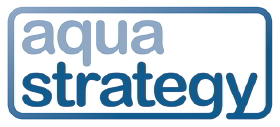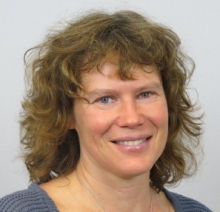Issue:
The Swedish Agency for Marine and Water Management is funding six projects to identify options for treating sewage to help reduce the release of pharmaceutical residues to the environment. Keith Hayward spoke with Margareta Lundin Unger about the programme and the plan to provide input to the Swedish Environmental Protection Agency’s work to report to government on the issue next year.

Questions around what action is needed on pharmaceuticals entering the environment in Sweden are becoming more prominent just now as the country heads towards likely action. ‘There’s a large political interest. The government is interested in them, and so are different municipalitites. Politicians are interested in the pharmaceuticals and what effect they have, especially on the ocean and the Baltic,’ comments Margareta Lundin Unger.
Unger works for the Swedish Agency for Marine and Water Management, and her agency is making an important contribution to the debate by funding six projects that are aiming to identify options for treating sewage to help reduce the release of pharmaceuticals to the country’s waters. Unger manages the steering committee activity for the projects which are together receiving a total of around Euro3.5 million during 2014-2017 from the agency.
‘The money we have been giving out is for research on the [treatment] techniques and how to implement them in Sweden for the circumstances that we have,’ says Unger. The aim, she explains, is to identify effective treatment options, and also to look at aspects such as cost, energy consumption, any negative consequences, and the working environment for treatment plant staff. ‘Also, a special condition in Sweden is that a lot of the sewage sludge is used in agriculture, so we need to think about that,’ she comments, contrasting the situation in Sweden with that of Swizterland, for example, where the sludge, along with any micropollutants removed from the water, is incinerated.
The national agenda
Just how important pharmaceuticals are now on the national agenda in Sweden is made clear by the fact that the government has instructued the Swedish Environmental Protection Agency to deliver a report by 1 May next year on the use of advanced treatment methods for removing pharmaceutical residues from wastewater. This assignment involves analysing the need for advanced treatment and looking at the technical solutions and their pros and cons, and any other consequences. The focus is on wastewater treatment plants serving a population equivalent of greater than 20,000, and the work fits in with the government completing its assessment by 2018 at the lastest.
‘I think our projects will be very important in order to see what it is possible to do,’ says Unger.
One complication though is that the government set SEPA this task after the wastewater treatment projects were set up. ‘The problem is they have to report by 1 May and our projects will continue for 2016 and 2017,’ says Unger. ‘But I still think it will give them valuable information,’ she adds.
SEPA’s schedule includes compiling basic data until around October, followed by analysis until February, with a subsequent period for gathering support for the report’s conclusions.
To help ensure the projects do provide input for SEPA’s timescale, Unger explains that two working groups have been started. One is focused on the different pharmaceutical compounds, dealing with aspects such as analysis and prioritisation. The other is focused on the treatment processes themselves and aspects such as cost and energy use. The intention is that the working group collaboration will help ensure the projects can be compared.
‘The projects have got some extra money from us in order to have this cooperation and we have said that we want them to come with ideas for the EPA and what they have to do,’ says Unger.
Emerging actions
The six projects have covered some diverse aspects of the wastewater pharmaceutical challenge (see box below). Unger explains that the projects have covered techniques such as ozone treatment and use of activated carbon, evaluating them at relatively large treatment plants (in Stockholm and Linköping) and at small ones (in Osby and Bromölla). The have also included a review of the state of the art in Germany and Switzerland, looking also at how the approches could be used in Sweden with its agricultural use of sewage sludge. Two of the projects are already finished – one focusing on latrine and source-separated toilet water, the other the pilot plant for Linköping.
Unsurprisingly, ozone treatment and use of activated carbon are the clear contenders as technology options, Unger notes, but there are important issues to be dealt with still, such as what substances should be tested for and how to align treatment needs with the status of the receiving waters.
Nonetheless, the country is moving towards action on pharmaceuticals. ‘I think in the near future there will be a requirement for at least the larger wastewater treatment plants,’ comments Unger, and in fact the city of Linköping, whose treatment plant discharges to a small watercourse, aims to complete full-scale treatment early next year.
The six sewage treatment projects funded by the Swedish Agency for Marine and Water ManagementSystems for the purification of pharmaceutical residues and other emerging substances Project partners: IVL Swedish Environmental Research Institute, Syvab, KTH Royal Institute of Technology, Stockholm Vatten Project looking at current and future process knowledge and understanding, including capital and operating costs, environmental impact, and life cycle assessment, with a focus on flexible sustainable solutions. RESVAV Project partners: Sweden Water Research, Primozone, VA Syd, NSVA, Aarhus University, City of Gothenburg, Gryaab, Lund University, and Sweco Project aiming to develop guidelines and design criteria for upgrading of Swedish wastewater treatment plants, either with ozone or activated carbon, including cost estimations. Includes looking at full-scale experiences in Germany and Switzerland. FRAM Project partners: Kristianstad University, Malmberg, SBVT, Krinova Incubator Activated carbon testing for pharmaceutical removal at Osby Reningsverk treatment plant. Pharmaceuticals in blackwater and faecal sludge Project partners: Swedish University of Agricultural Sciences, SP Process Development, JTI – Swedish Institute of Agricultural and Environmental Engineering Evaluation of pharmaceutical concentrations in blackwater and faecal sludge. Knivsta Project partners: KTH Royal Institute of Technology, Swedish University of Agricultural Sciences, Umea University, Gothenberg University Evaluation of full-scale ozone treatment at Knivsta sewage treatment plant in a four year project, including estimated removal efficiencies for 120 pharmaceuticals. Ozone and MBBR - from pilot to full scale Project partners: IVL Swedish Environmental Research Institute, Tekniska Verken Design of full-scale installation using ozone and MBBR (moving bed biofilm reactor) for Linköping |
Keywords:
- Sweden, micropollutants, pharmaceuticals, sewage treatment






